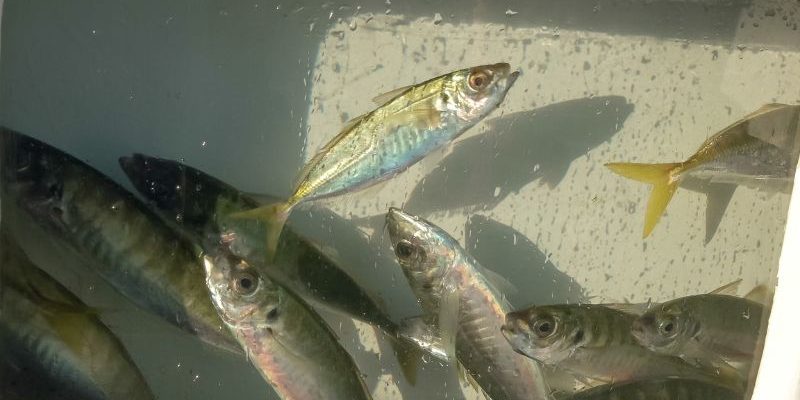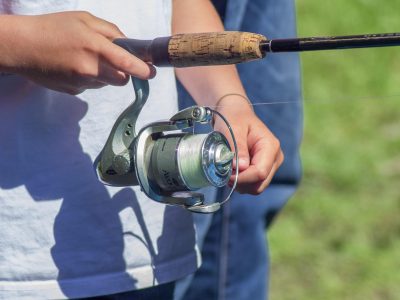When it comes to fishing, live baiting is one of the most effective methods for catching a wide range of species. Both saltwater and freshwater environments offer exciting opportunities for anglers, but the techniques and types of bait vary significantly between the two.
Whether you’re planning to fish inshore, offshore, from a boat, or along the shore, understanding these differences will give you an edge on the water.
Saltwater Live Baiting: Techniques and Tactics
Saltwater fishing presents a wide array of opportunities for anglers targeting species both inshore (near the shore) and offshore (further out to sea).
In saltwater, live baiting can be particularly productive, allowing anglers to attract predatory fish in a natural way. The right bait, presentation, and technique can make all the difference.
Where to Get Saltwater Live Bait
Most saltwater anglers start their trips by either catching their own bait or purchasing it from local bait shops or bait boats. Some common live bait options include:
- Ballyhoo: A popular choice for offshore trolling.
- Pinfish: Often used inshore, perfect for catching species like redfish and snook.
- Shrimp: A versatile bait that works well in both inshore and offshore settings.
- Blue Runners: Frequently used offshore for larger predatory fish like tuna and marlin.
- Crabs and Sandflea: Crabs like blue, fiddler, and pass crabs work well for catching species such as sheepshead, tarpon, and redfish. Sand fleas, commonly known as mole crabs, are excellent for surf-fishing species like pompano. They can be harvested in the surf using a rake and stored for several days in cool, moist conditions. Proper preparation of these baits maximizes their effectiveness, helping anglers lure fish in both deep and shallow waters.
Local knowledge is key when selecting bait. Each coastal region has its own best options, so check with local bait shops or experienced anglers for advice on what’s currently working. In many cases, you may even prefer to catch your own live bait using sabiki rigs or cast nets near grass beds, reefs, or pilings.
Saltwater Live Bait Techniques
Live bait fishing in saltwater is incredibly versatile and can be effective in a variety of environments, from piers and bridges to offshore reefs and grass patches. Here are some of the most effective techniques:
- Inshore Fishing:
- Bridges and Piers: Live bait like shrimp or pinfish can be rigged and cast near structures to attract species such as snook, tarpon, and redfish. Hooking the bait through the dorsal fin or tail can keep it lively and help it swim naturally.
- Shoreline Fishing: When casting from shore or shallow areas, using a float to keep live bait at the right depth can be productive. This is especially true for species like sea trout or flounder.
- Offshore Fishing:
- Kite Fishing: This technique is excellent for presenting live bait near the surface without spooking wary fish. Commonly used when targeting sailfish, kite fishing keeps the bait on top of the water, creating a natural presentation.
- Slow Trolling: Ideal for covering a lot of water, slow trolling live bait such as ballyhoo or blue runners works well for catching pelagic species like mahi-mahi and kingfish.
- Drifting Over Reefs: This is particularly effective for bottom-dwelling species like grouper and snapper. Bait is dropped over a reef and allowed to drift naturally with the current.
- Deep Dropping: For targeting deep-sea species like tilefish, swordfish, or deep-water groupers, anglers use heavy weights to send live bait down to the ocean floor, where these species feed.
Hooking Techniques for Saltwater
The way you hook live bait can greatly affect how it moves in the water, which in turn can impact your success. Here are a few popular methods:
- Bridle Rigs: These are commonly used for larger baits, allowing them to swim more freely.
- Hooking Through the Dorsal Fin: This method keeps bait swimming upright and natural, making it an ideal choice when fishing inshore.
- Hooking Through the Tail: This encourages the bait to swim downward, which can be effective when trying to reach deeper water or target fish near the bottom.
Freshwater Live Baiting: Simplicity and Precision
While freshwater live baiting may seem less complex than saltwater, it still requires knowledge of the local environment and fish behavior. Freshwater ecosystems, such as lakes, rivers, and ponds, house a variety of species that respond differently to live bait than their saltwater counterparts.
Where to Get Freshwater Live Bait
Unlike saltwater fishing, freshwater anglers usually purchase their bait from local bait shops. Bait availability can vary depending on the region and the type of fish you’re targeting. Common freshwater live baits include:
- Shiners: A favorite for targeting bass and pike.
- Worms: Nightcrawlers and red wigglers are versatile and work for many species, from catfish to bluegill.
- Crickets: A go-to bait for panfish like bluegill and crappie.
- Eels: Great for targeting predatory species like largemouth bass or even catfish.
- It’s essential to know what the fish in your local waters prefer, as certain species can be more selective than others.
Freshwater Live Bait Techniques
Fishing with live bait in freshwater tends to focus more on depth and presentation, with a few key techniques being widely effective:
- Bobber Fishing: Using a bobber or float is a great way to keep live bait at a desired depth while also providing a visual cue for bites. This technique is especially popular for targeting species like crappie, bluegill, and bass.
- Bottom Fishing: For species that feed on or near the lake or riverbed, such as catfish or carp, fishing with live bait directly on the bottom can be productive. Worms or minnows are often used for this method.
- Casting and Retrieving: For more active species like bass, casting live shiners or minnows and retrieving them slowly through the water column can mimic an injured baitfish, triggering strikes.
While freshwater live baiting may appear more straightforward, it’s important to pay attention to how the bait behaves in the water.
The Importance of Knowing Regulations
Whether you’re fishing in saltwater or freshwater, it’s important to understand that the use of live bait is often regulated. Some areas have restrictions on the types of bait that can be used or specific rules regarding hook sizes, rigging techniques, or where live bait can be harvested. To stay compliant with local fishing laws, download the FishVerify App.

With the FishVerify App, you’ll have access to local regulations, fish identification tools, and more, ensuring that your fishing trip is both successful and legal.


